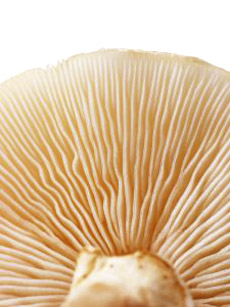Mushroom Types Three Cheers for the Fungus Among Us
|
 Photo of enoki mushrooms by Kelly Cline | IST. |
|
OverviewDepending on how old you are, once upon a time “gourmet” meant that you bought your white button mushrooms fresh, instead of in a can. Today, “gourmet” means that you don’t buy white button mushrooms at all. It’s all about wild. But most people aren’t aware of how glorious the world of mushrooms is. Asian markets, farmers markets, online retailers and specialty grocers are ready to enrich your plate with a selection of mushrooms that bear little resemblance to the cute, though not too flavorful, fellow that has long been resident wrapped in plastic in your supermarket produce section. The popularity of foraged wild and cultivated specialty mushrooms can be attributed to a change in mushroom farming in the late 1970s and early 1980s. At that time, owners of mushroom farms and wild mushroom hunters began to introduce the public to unique varieties of fungi that most people had never seen before. It’s hard to imagine a time when the meaty portobello wasn’t a household name; but without this big boy, we would still be feasting on snowy white buttons. We would never know the light crunch of raw enoki, the hearty, meaty and smoky taste of shiitakes and the nutty flavor that sautéed morels bring to a dish. |
||
|
Some of the tastiest and most interesting mushrooms are wild, but only about 3% of the wild mushrooms in the world are suitable for human consumption. Translation: “not suitable” means poisonous, so don’t go picking the mushrooms that sprout up in your yard after a damp spell, or the beauties you find while hiking the woods. It takes extensive training to identify an edible mushroom, so avoid the romantic (and economical) temptation to “pick your own.” (We’ve recommended a book at the end of this article if you want to learn to identify edible mushrooms.)
|
 Groovy gills: mushroom photo by David Guglielmo | SXC. |
|
|
||
Last Updated Aug 2021
© Copyright 2005-2025 Lifestyle Direct, Inc. All rights reserved. All images are copyrighted to their respective owners.